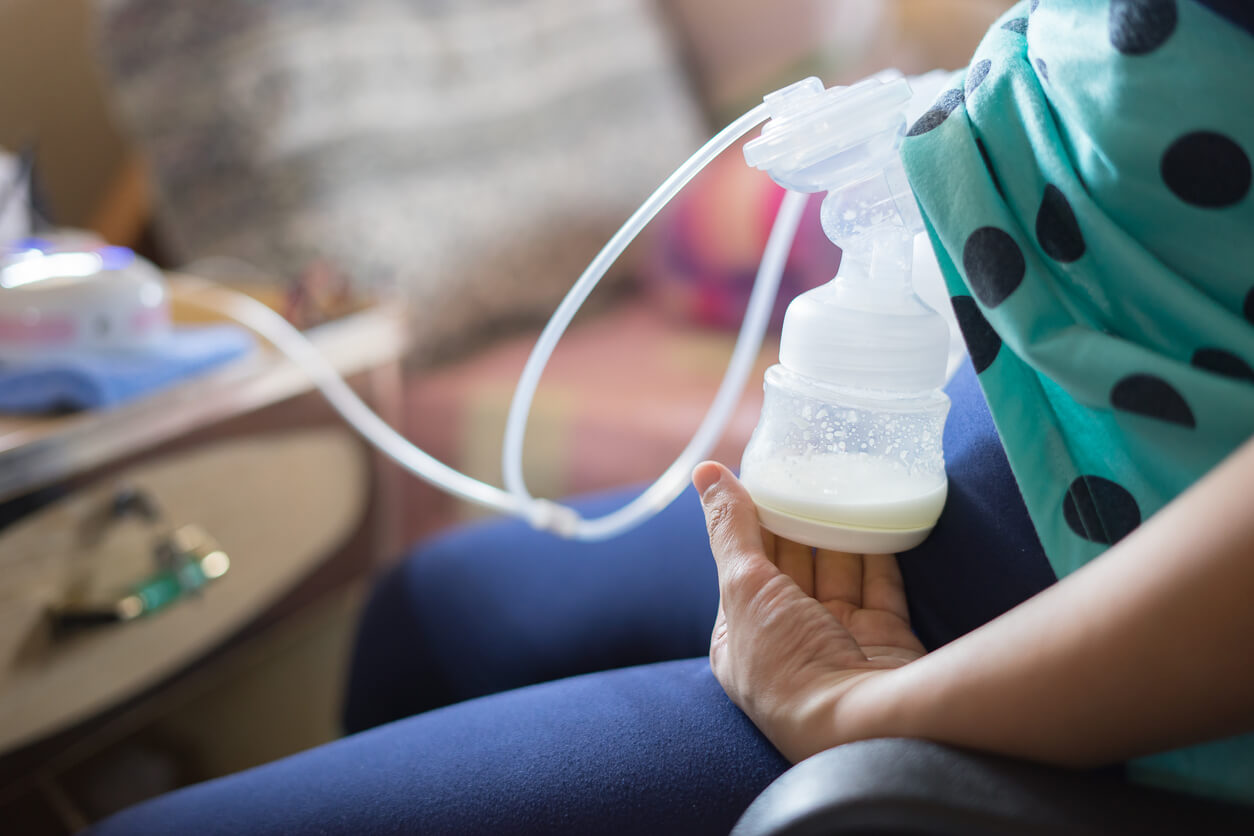How to Breastfeed with Flat or Inverted Nipples?
The presence of flat or inverted nipples when breastfeeding requires certain practices for successful lactation. Learn more!

Inverted nipples are a condition that occurs in 10-20% of the general population. While it’s not a life-threatening condition, it alters the physiology and psychology of the individual. It can even hinder some aspects of breastfeeding, but you shouldn’t lose motivation and let yourself be overcome by these difficulties. Here are some tips for breastfeeding with flat or inverted nipples.
What are flat or inverted nipples?
Inverted nipples are a condition in which the nipple retracts inward, rather than pointing outward, as in normal anatomy. In addition, it can be both acquired and congenital and occur in both sexes. Therefore, when present in women, it can be problematic during breastfeeding, remaining symptom-free before that.
You may be interested in: Using Nipple Shields While Breastfeeding
The classification of inverted nipples
There’s a surgical classification that divides inverted nipples into 3 grades, according to the ease of manipulation, the degree of fibrosis, and the extent of damage to the lactiferous ducts:
- Grade 1: These are known as shy nipples. They have a slight fibrosis and their lactiferous ducts are normal, which allows them to breastfeed easily, although the onset may be difficult.
- Grade 2: These have moderate fibrosis and their milk ducts are slightly retracted. Therefore, it’s possible to breastfeed, but the baby may have difficulty latching on to the nipple.
- Grade 3: In this case, there’s significant fibrosis and the milk ducts are small, highly retracted, and constricted. Therefore, breastfeeding becomes almost impossible. In addition, these mothers often experience rashes, recurrent mastitis, and sore nipples.

Breastfeeding with flat or inverted nipples
The most important thing is to get specialized help if you have flat or inverted nipples. In addition, experimenting with different positions helps to find the one that’s most comfortable and efficient for the correct latch-on of the newborn. There are even devices or items that can help make breastfeeding easier.
Use nipple formers
There’s much debate regarding the management of flat or inverted nipples during pregnancy. However, the use of nipple formers that are placed inside the bra is believed to extract the nipples. It’s best to start using them as early as 32 weeks. It should start with one hour a day and gradually increase to 8 hours a day. Even after birth, they can be used at least half an hour before breastfeeding to extract the nipple.
Early breastfeeding
It’s best to try to experience skin-to-skin contact with your newborn immediately after birth and to keep it between the breasts for as long as possible. In fact, this practice allows and stimulates the baby to use its innate reflexes to locate the mother’s breasts and latch on more easily. In those cases in which the baby finds it difficult to latch on and feed properly, you can try to propel the nipple just before breastfeeding.
A cold pack to keep the nipple out for a few minutes is often helpful.
Use a breast pump
Breast pumping may be indicated to pull the nipple out just before breastfeeding. Also, according to a 2021 review, successful breastfeeding is closely related to proper latching. In turn, pumps are often indicated after birth to remove the adhesions under the nipple.

Stimulate the nipple manually
Before breastfeeding, it’s best to latch on and gently rotate the nipple for two minutes. At the same time, if there’s difficulty with only one nipple, start with that breast, as your baby has more suction at the beginning. The Hoffman technique, which consists of massaging the nipple to help nipple eversion, used to be recommended but is currently out of use as there’s no evidence of its benefits.
Read also: The 7 Worst Breastfeeding Tips
Using the syringe technique
This technique uses a common syringe but with certain modifications. That is, the part where the needle is located is cut off and the plunger is inverted to change directions. Then, the back of the syringe is placed over the nipple and backward force is exerted with the plunger to help move the nipple outward. Consequently, studies published by Trial conclude that it’s a safe, economical, and simple technique.
Use nipple shields
Ideally, choose a shield that’s as thin as possible. In fact, there are ultra-thin silicone liners that don’t require removal, as they’re effective. The function of these liners is to provide a firmer and larger surface for your baby, in addition to stimulating the palate to make sucking easier.
Flat or inverted nipples and breastfeeding
Even with flat or inverted nipples, all breasts are suitable for breastfeeding. However, some will require particular advice and, at the same time, perseverance and patience. For this reason, if in doubt, you can consult a breastfeeding specialist or a lactation consultant.

